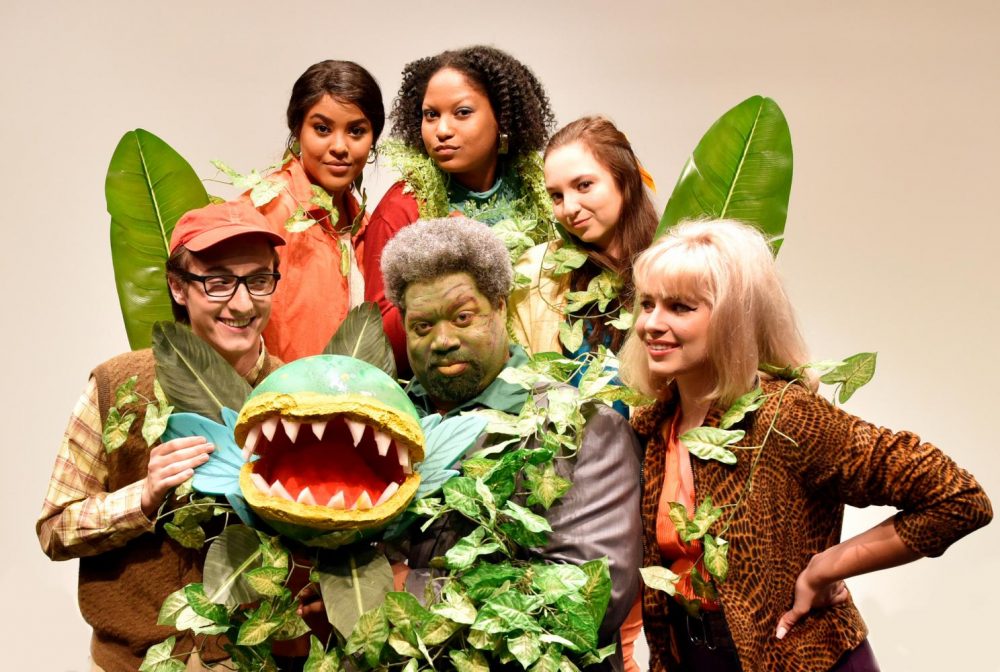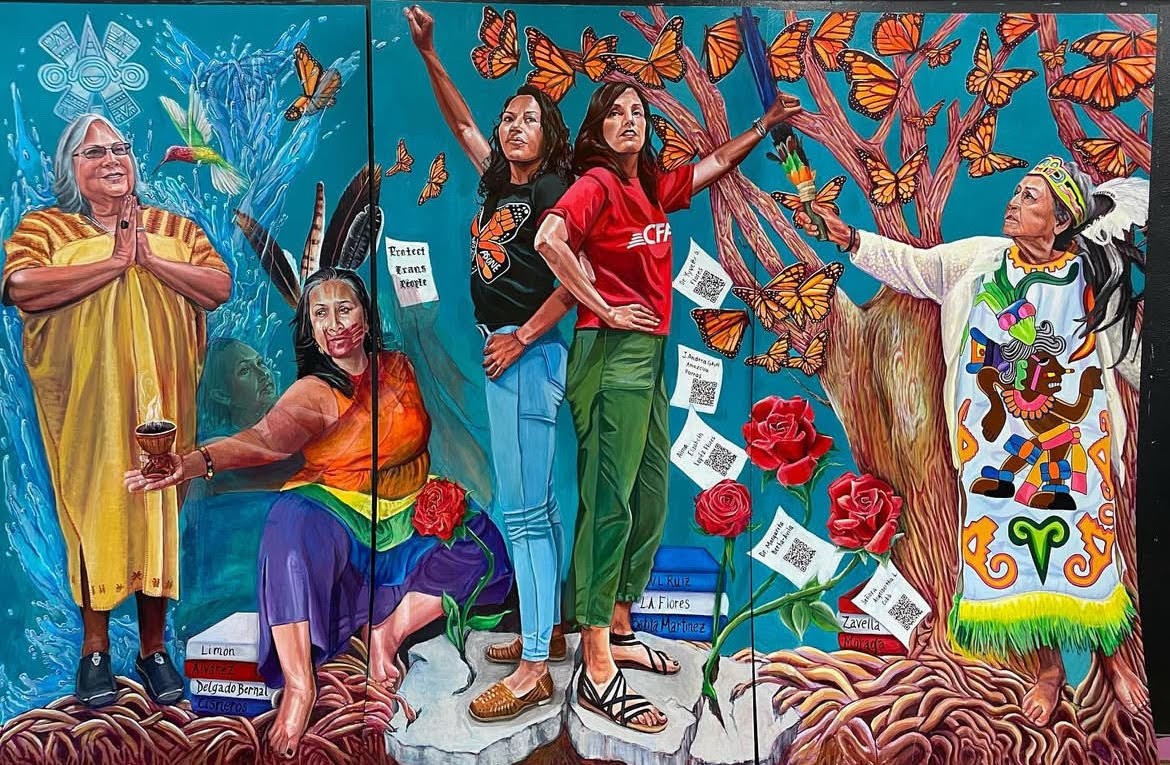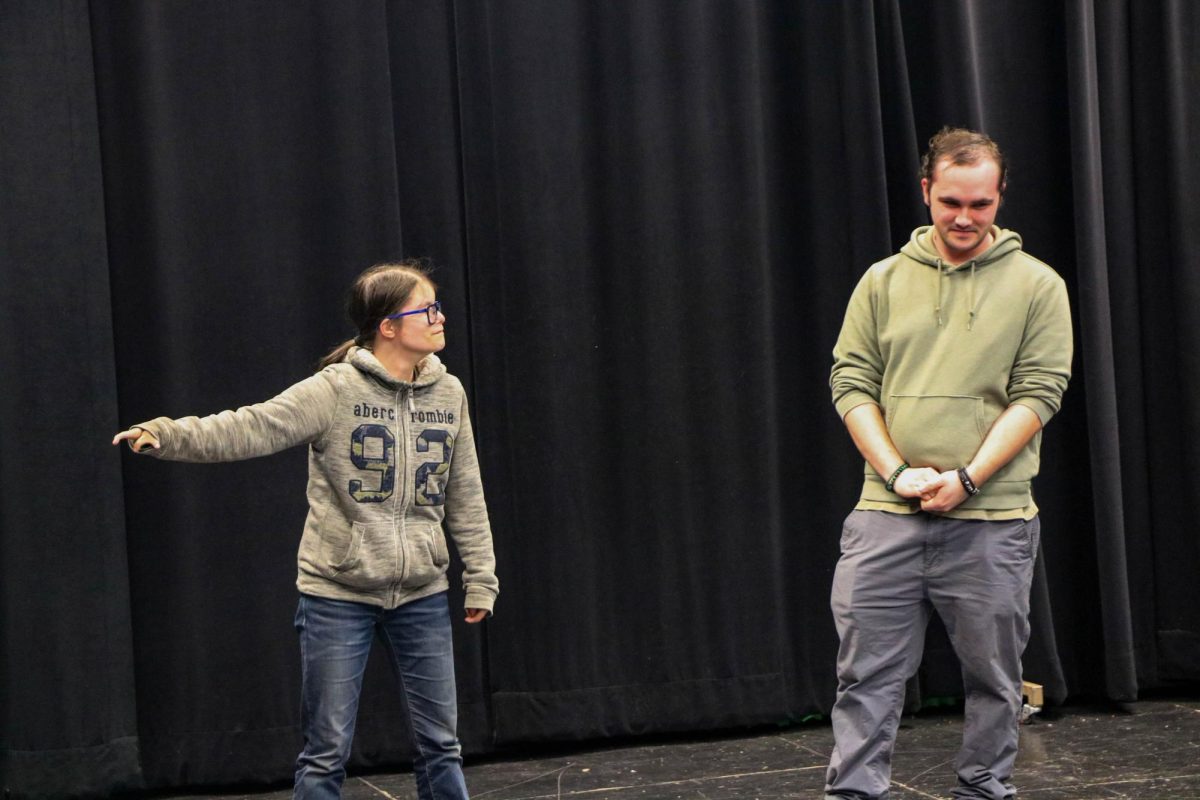“Little Shop of Horrors” started as a film released in 1960, hit Broadway by 1982 and was developed into another film in 1986 with an all-star cast. It’s been running in theaters all over the world ever since.
This show is a classic example of a dark comedy with elements of absurdity and at times, morbidity. This fall, the American River College Theatre Department decided to take on the classic, and they nailed it.
“Little Shop of Horrors” follows the life of floral shop employee Seymour, as he quietly pursues his coworker Audrey romantically. Seymour discovers a one of a kind plant that he affectionately names Audrey II, but soon finds out the plant feeds on human flesh. With a guilty conscience, Seymour chooses to keep Audrey II alive, not fully grasping the consequences of the sacrifices that will be made to do so.
Stand out elements of this production include the vocal direction, costume and set design, and of course, the amazing manipulation of the puppet, Audrey II. This was a talented cast to say the very least, with strong leads, Ethan Mack and Kloe Walker, playing Seymour and Audrey.
The vocals were impressive and balanced well with the orchestra. Although the songs were difficult to perform with many overlapping voices, each vocalist was strong and harmonies blended nicely.
The show carried strong comic relief throughout, despite the bizarre and morbid plot. The audience hooted and hollered, rolling back in their seats through the strange and absurd comedy layered throughout the show.
One actor to note is Jonathan Wertz, who played five different roles in the entirety of the musical, including the sado-masochistic dentist, Orin Scrivello. He brought different twists to each character, even changing up the accents and mannerisms.
The costume design was superb, representing impoverished 1960’s downtown New York City. The costume choices reflected the lives of prostitutes, drug addicts and struggling salesmen on Skid Row.
The set design was a crucial element to “Little Shop of Horrors,” and it strongly succeeded. The use of dull and neutral colors, old-school metal trash cans grouped together, and an abandoned apartment front gave the stage a dark alley-like feel, as if strolling through a bad area of town.
The shop itself blended nicely with the Skid Row setting, but there was an element of charm to the inside of the shop. As the plant continues to bring in more customers, the set design showed the progression of the financial success of the shop, with larger inventory of flowers and more expensive floral arrangements displayed.
Of course the plant, Audrey II, is the quintessential theatrical piece of this show that invites the audience deeper into this bizarre tale. The liveliness of the plant’s manipulation beckons audience members to expand their suspension of disbelief. The plant goes through four stages of growth, all entirely mobile and incredible to look at. Audrey II’s final size was extraordinary with vines growing haywire, leaves dangling out the bottom and a terrifying mouth big enough in diameter to fit at least five people.
The plant manipulation, operated by Fetalaiga Faga, was one of the stand-out performances of the entire production. The audience never sees Faga, since the puppet was so thoughtfully created to hide the manipulator. Faga manipulated Audrey II with near perfectly timed movements to Audrey II’s speaking and singing lines, done by Corey D. Winfield. Faga and Winfield made a fantastic team.
“Little Shop of Horrors,” although an unusual plot-line, makes for a truly entertaining experience that will leave you laughing uncontrollably and thinking, “What did I just watch?” ARC Theatre never disappoints. This is one you don’t want to miss out on.
ARC’s Little Shop of Horrors will have its last weekend of performances Oct. 25 through 27. Go see it!




















